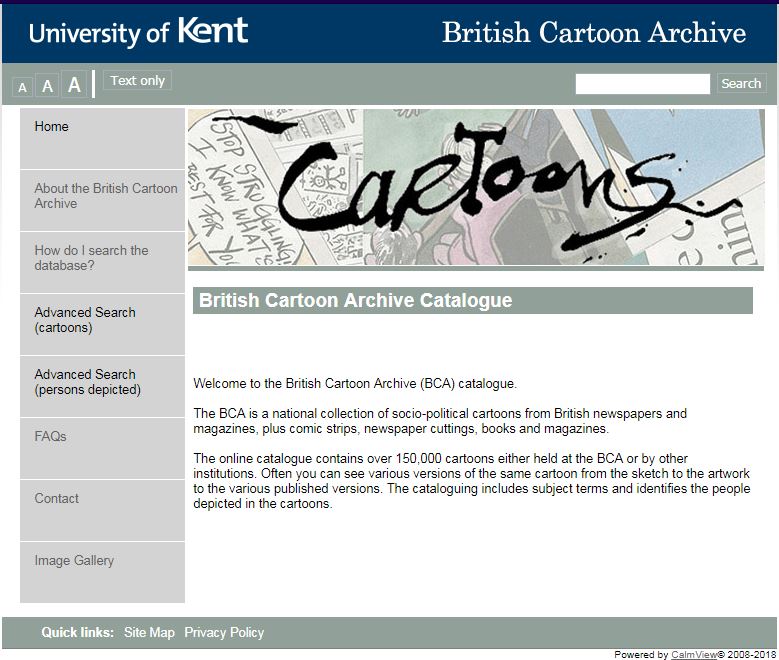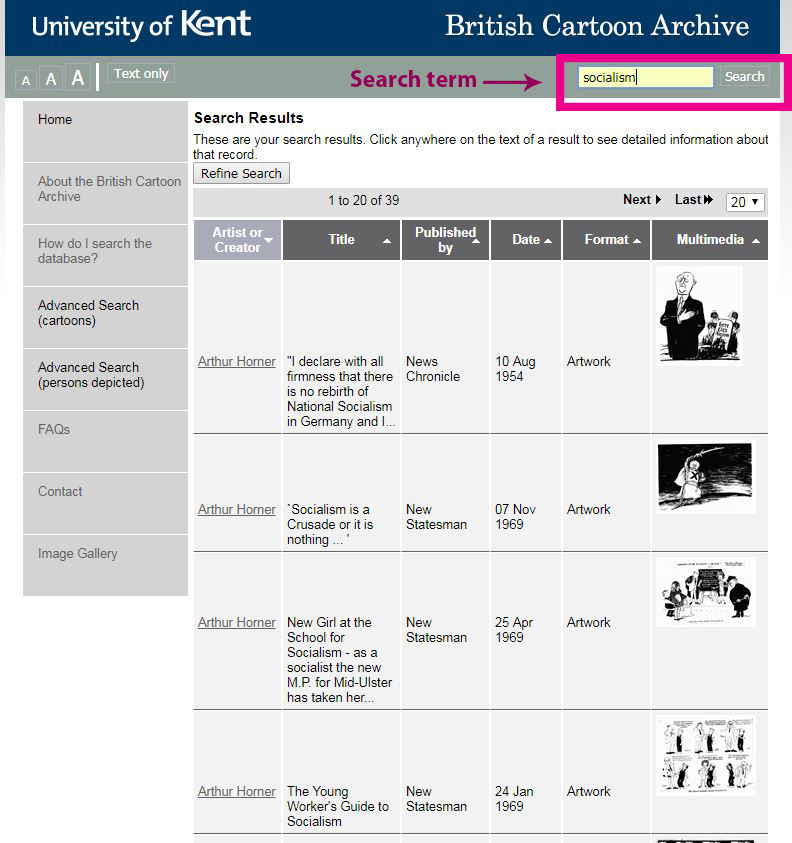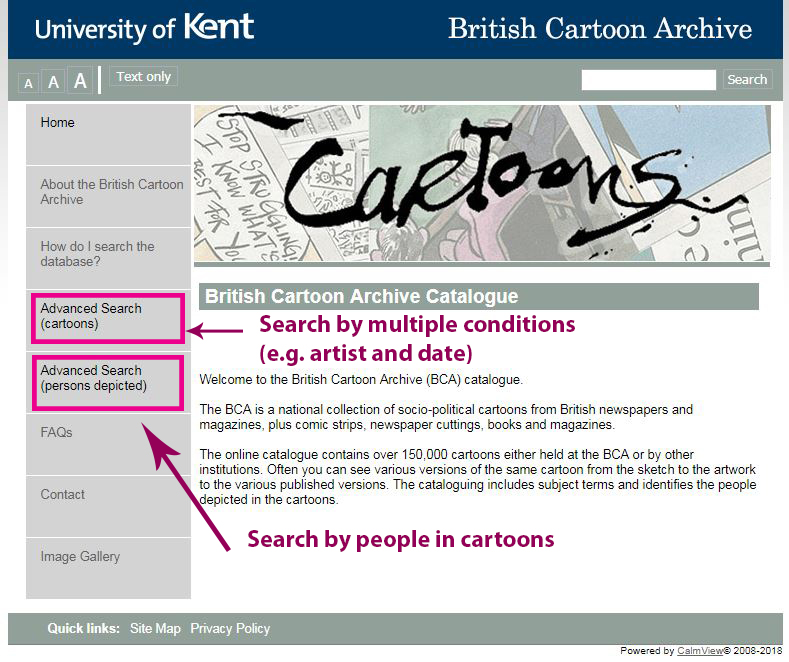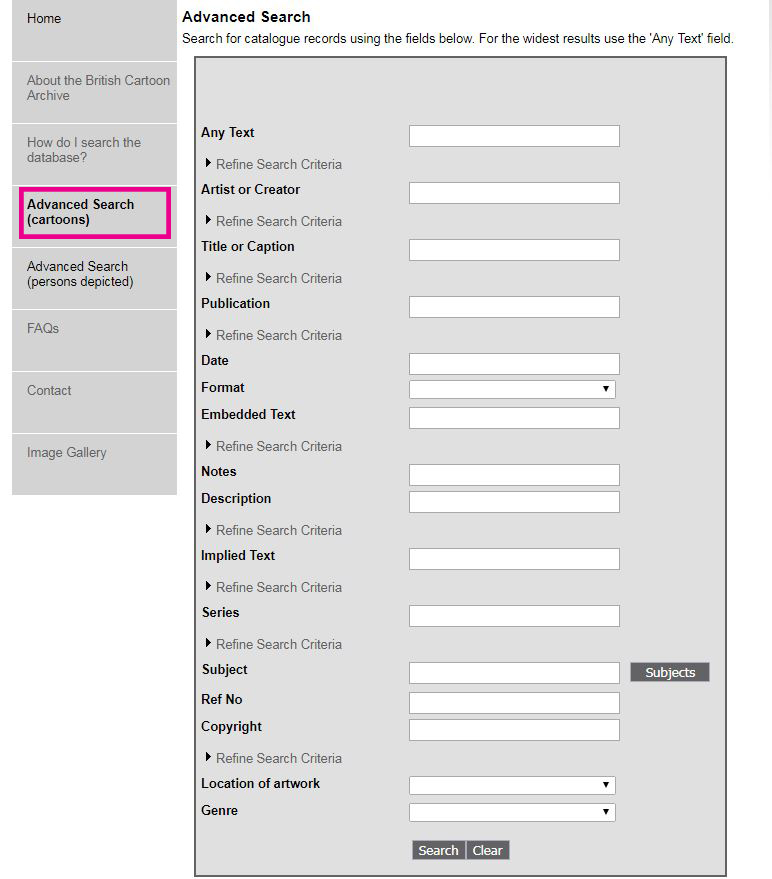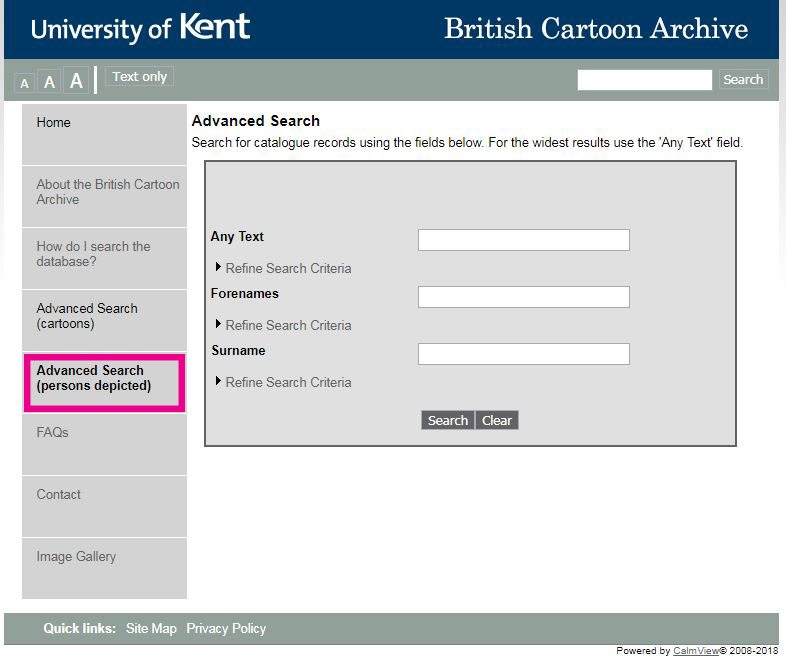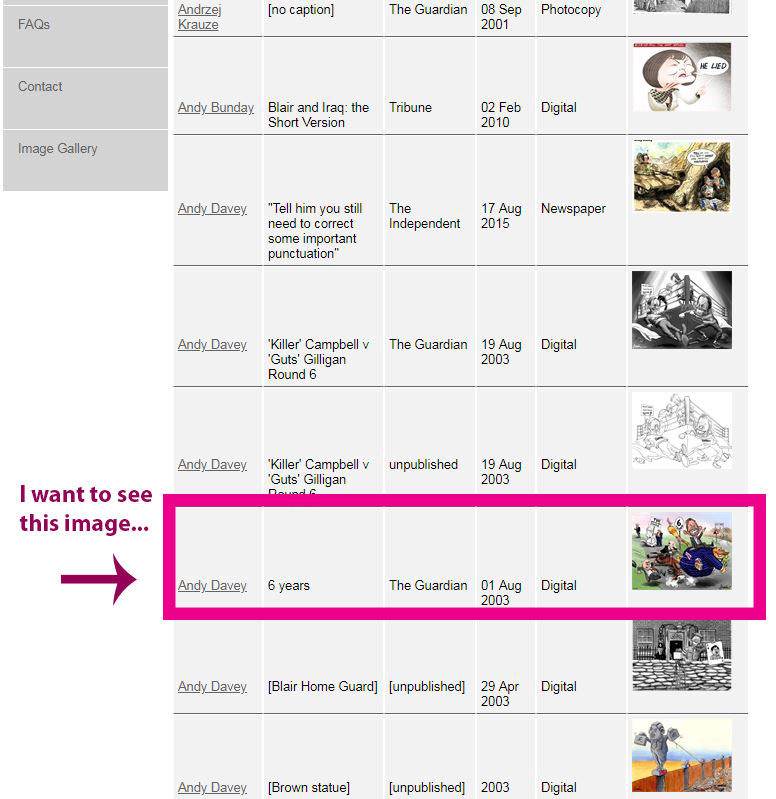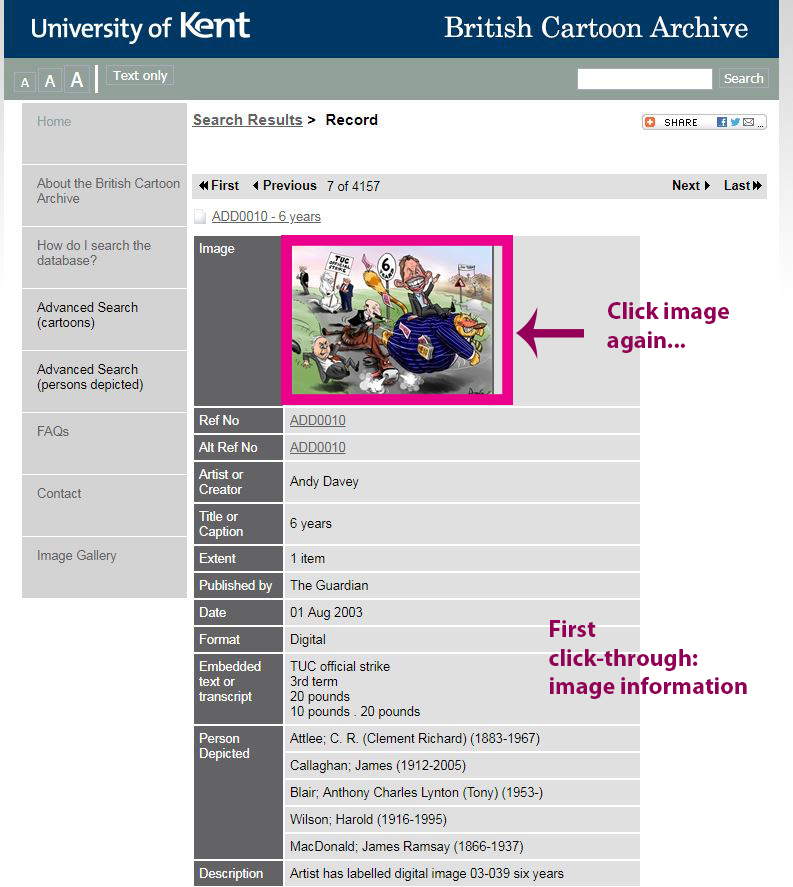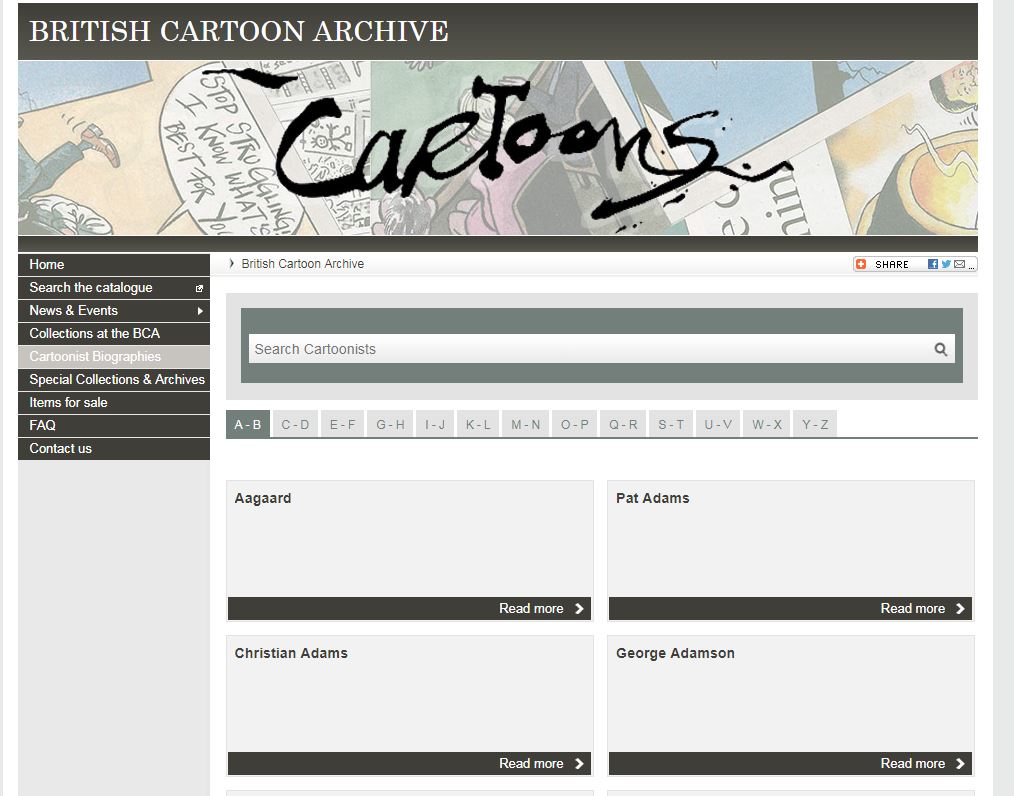Welcome to part two of our refresher series on how to find Special Collections & Archive material to use in your research! Today, we’re exploring the wonderful (and sometimes weird) world of the British Cartoon Archive (BCA).
Kent’s British Cartoon Archive is one of the largest collections of political cartoons in the UK, if not the world; since its establishment by academics here in the 1970s, the Archive has grown to contain material from over 300 artists, and over 200,000 cartoons have been digitised and put online through the British Cartoon Archive catalogue.
With such a vast collection, it can be tricky to know where to start searching for material! But we are here, as ever, to guide you through our wonderful cartoon collections…
1) Think around your research area
As cartoons tend to be catalogued using the language of the time, it’s worth taking a few minutes to jot down some words, people, places and dates related to your topic. This way you can try other searches if your initial results don’t yield much – it can be a real trial and error type quest! Here’s an example, imagining you’re interested in cartoons from the Second World War:
2) Books or artwork?
You can find British Cartoon Archive material in two places: if it’s books and journals you’re interested in, LibrarySearch is your place to go. You can find our guide to locating material using LibrarySearch here.
If it’s cartoons, there’s a whole new website for you to explore! Much of the BCA’s art is available to view online for free through the BCA catalogue – you don’t need a special log in to do so.
3) Searching the BCA catalogue – general searches
If you want a general overview of what artwork can be found in the British Cartoon Archive that’s relevant to your research, the main search bar at the top of the catalogue is your friend. You can search by keyword / artist / place / date and the catalogue will bring up images that match your terms. You can order the images by date and view every relevant image on one page rather than clicking through, if you prefer to do so.
4) Searching the BCA catalogue – if you know what you’re looking for
If you know have a rather more specific search term, you can use either of the ‘Advanced Search’ options on the left hand side. If you’re after seeing all cartoons of Margaret Thatcher, use the ‘persons depicted’ search. If you’re interested in cartoons between specific dates, or on a certain topic but by a particular artist, the ‘cartoons’ search is for you.
5) Click through for bigger images
When you find relevant results, you’ll see a tiny version of the cartoon next to a description of the work. Click through twice and you’ll see a larger version of the image.
6) Don’t forget copyright

42061 – Leslie Gibbard: “With the compliments of my client – she’s suing for breach of copyright!”, 15 June 1988, The Guardian
Although the BCA looks after (and owns) many collections of cartoons, we don’t always hold the rights to reproduce the images. Many cartoonists’ work is owned by the newspapers they draw for, so if you’re looking for an image to publish please do take note of the copyright information that’s included in the catalogue entry. We can also supply higher-resolution versions of images for a fee, but bear in mind that the copyright owners may also charge for image use. You can find more information on copyright here.
If you’re wanting to use BCA images for use in presentations, essays or teaching, please do get in touch with us and we can explain how this works.
7) Explore the biographies for artist (and collection) information
Did you know that the BCA website has details about almost every cartoonist within our holdings which you can browse? What’s more, if you scroll down to the bottom of each artist biography page you can find details of any additional holdings that aren’t catalogued yet – so if something doesn’t appear on the main BCA catalogue, it’s worth having a look here. You’re welcome to view uncatalogued material, just get in touch with us and say what you’d like to see.
Part of our ongoing series about finding material in Special Collections & Archives: see also tips for exploring collections through LibrarySearch.


